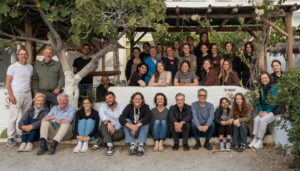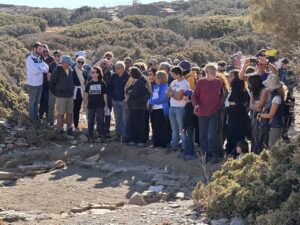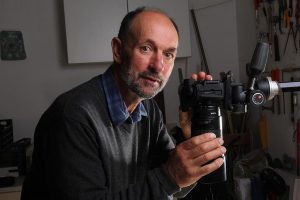
Web Content Producer
The Zagora Archaeological Project (ZAP) attracts eminent professionals from archaeology and associated disciplines. Bob Miller, an internationally renowned photographer, is the Zagora Project’s archaeophotographer.
An exhibition of Bob’s photography opens to the public in Canberra on Saturday 18 April – highlighting almost 25 years of his work on archaeological excavations around the world. The exhibition, ‘Beyond the expected’, is on at the University of Canberra, in the foyer of Building 24, on University Drive South. The exhibition closes on Friday 1 May 2015. Sadly, many ZAPpers won’t be able to attend the exhibition opening, and Bob won’t be able to make our Zagora Study Day on Saturday 18 April due to an inadvertent scheduling clash. Further details about the exhibition and more of Bob’s work can be seen at bobmiller.com.
Bob’s first love was visual art. However for his 12th birthday, he was given a Kodak Retnet 1A camera, opening up a new avenue for his creativity. Bob joined the camera club at school, and his father taught him how to print photos in their bathroom darkroom.
However, after school, he decided to pursue visual art by training as an artist at the old National Arts School in Sydney, majoring in sculpture, with other studies in printmaking and photography, and graduating from there in the mid 1970s.
With his Diploma in Sculpture under his belt and adventure in his heart, Bob got a research visa to undertake a photographic ethnographic study of the people, culture and lifestyle of Bougainville, Papua New Guinea (PNG). It is an extensive photographic documentation of the people and their culture.
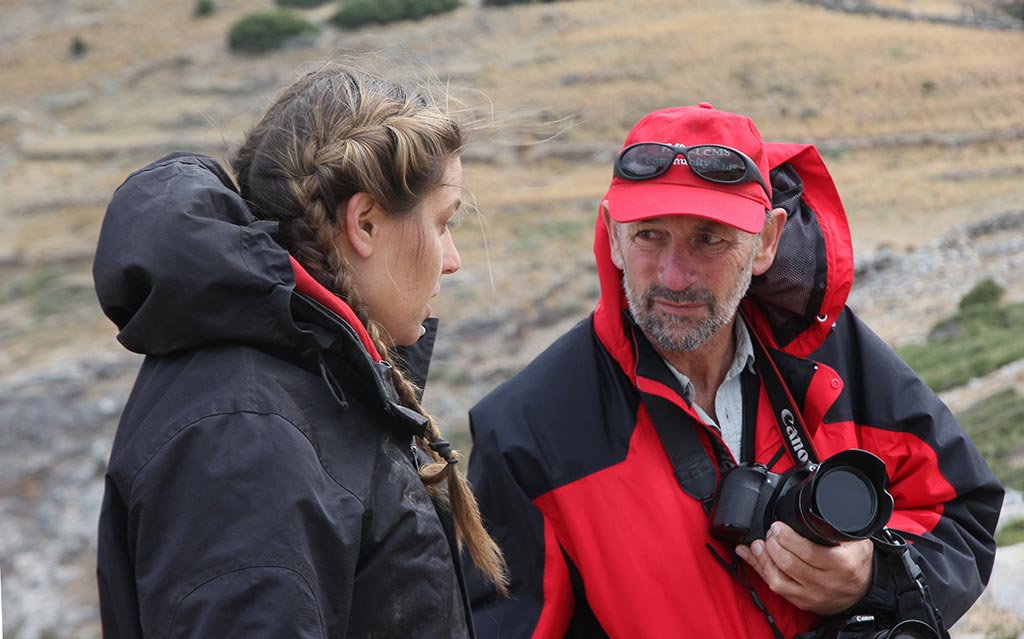
Bob so immersed himself in his work there that the camera became an extension of himself and of his vision. The technical aspects of working with cameras and lenses became second nature to him, so that he didn’t even have to consciously think about which knobs and dials to turn to get the result he sought.
After the PNG project, Bob returned to Australia. His love of sculpture remained but, realising that there are very few people in Australia able to earn a reasonable living as sculptors, he completed the BA Visual Arts (Photography). He did press work as well as doing freelance commercial photographic work for various studios but mostly in his own studio in Eastwood, Sydney. He won state and national awards for his wedding and portrait photography. He appreciates the experience of press and wedding photography because they require you to get it right on the day – there are no second chances. Also, it encourages you to get the shots right in the camera so after the shoot is over, all you have to do is catalogue the shots – because there is little or no time for tweaking in post-production. So it helps to hone your skills as a photographer.
During that period, he also taught art, photography, observation drawing, life drawing, painting and printmaking, in TAFE in Sydney, as well as becoming involved with the Australian Institute of Professional Photography (AIPP) which he believes inspired members to hone their technical skills and artistry.
The recession of the late 1980s caused reduced opportunities for studio photographers, so Bob moved to Canberra where he became a staff photographer at the National Library of Australia (NLA).
Bob left the NLA to take up a position teaching Bachelor of Graphic Design and Photography as an elective unit at Canberra University, where he worked full-time until 2010.
How the archaeophotography started
Before commencing at NLA full-time, Bob saw an advertisement in the Australian Institute of Professional Photography (AIPP) for a photographer to go to Torone, Greece, to work on an archaeological expedition in 1990.
Bob applied and was accepted – and this was his introduction to archaeological photography. Bob recalls a long season of about three months.
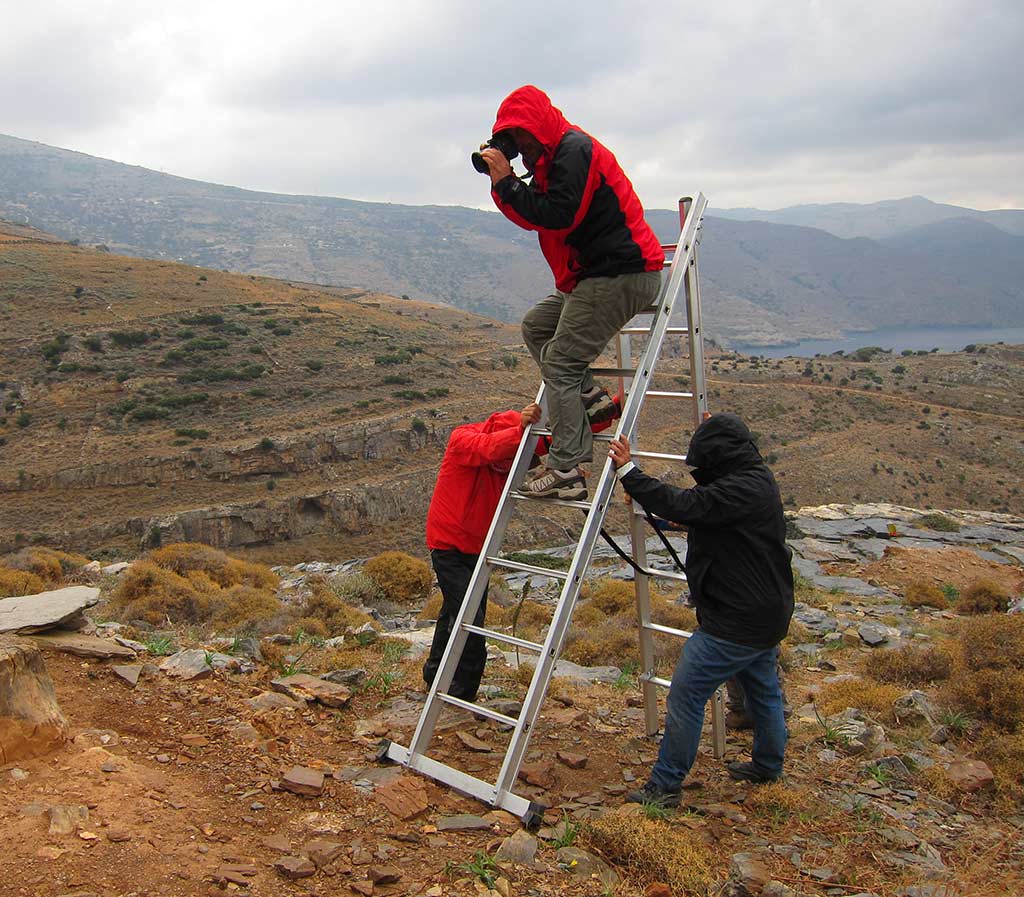
The director of the Torone project was Professor Alexander Cambitoglou – also the director of the 1960s and 70s excavations at Zagora. He and Dr John Papadopoulos (the second-in-charge on the project) guided Bob in what was required for archaeological photography which is different from what is required for commercial or artistic work – for example, the angles that need to be photographed to enable the images to be of greatest use to researchers.
In another link from then to now, Stavros Paspalas was a student at Torone during Bob’s first work there, and Stavros (now Dr) is a co-director of the Zagora Archaeological Project.
People liked Bob’s photographs and Bob found the work really interesting. It added to Bob’s portfolio of cultural fieldwork that he done in PNG.
Bob loves the variety of archaeological work. He is enthusiastic both working in the field (even in the variable and extreme conditions of Zagora) and in a studio situation, photographing finds with controlled lighting.
You can feel Bob’s connection to the landscape through his landscape photography. As he observed to me, “The ancients built their towns and cities on places of prominence.” And Zagora is no exception.
In the field Bob also photographically records the excavations, trenches and archaeologists working. He improvises rigs to enable high angle photography which accurately represents the trench lines. He is fearless about climbing high on a ladder – even in Zagora winds – to get a great angle.
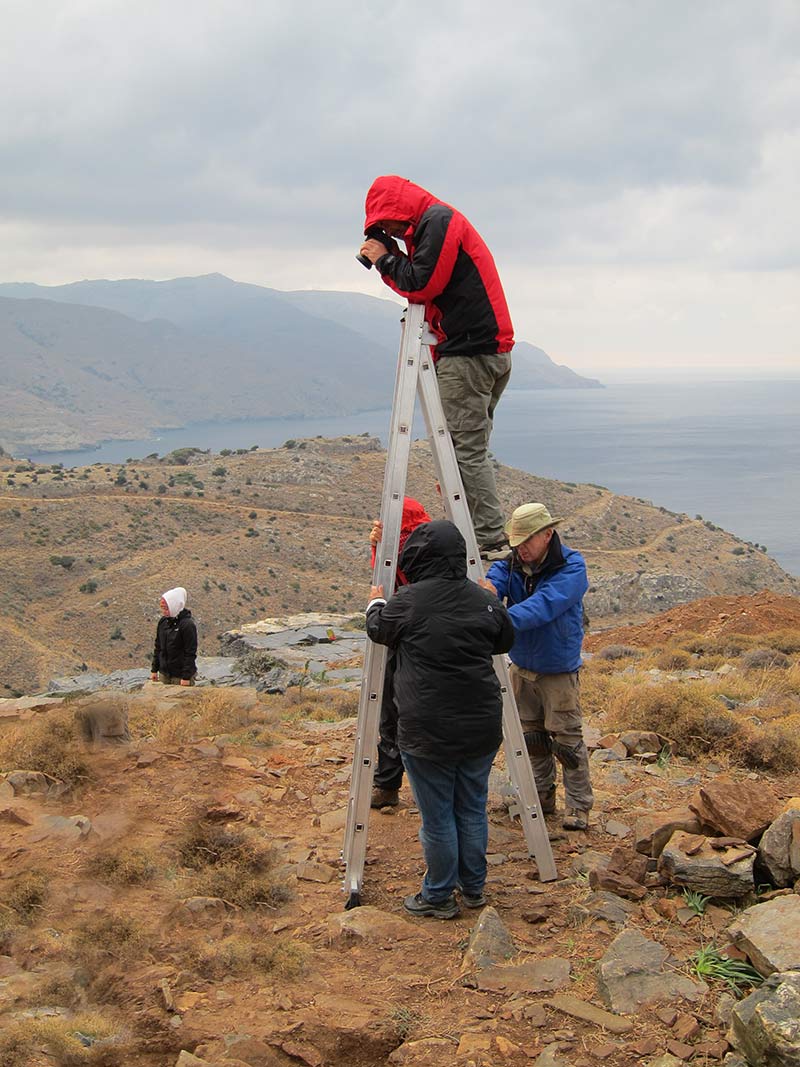
Bob loves the challenge of getting great images of the variety of materials he is faced with in archaeology: pottery, bone, metals, obsidian and different types of stone from black granite through to white marble. He relishes the challenge of revealing the nuances in, for example, a piece of obsidian glass. He says some of the work is technically very demanding or challenging – but he adds: “That’s part of the fun of it.”
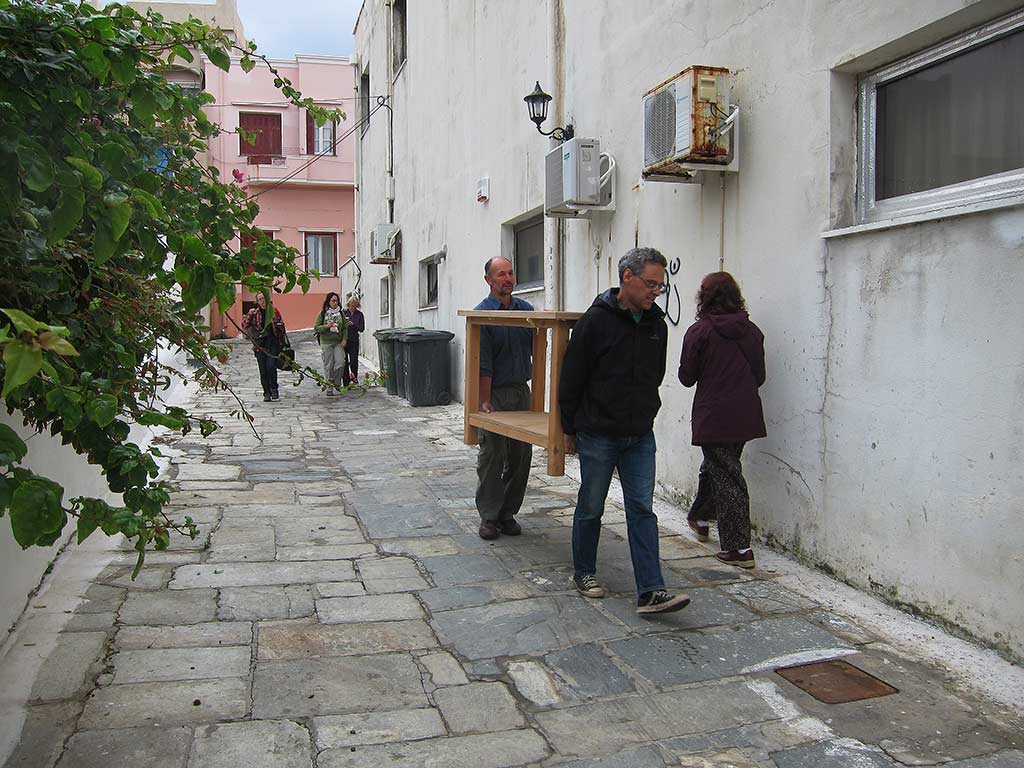
Bob works closely with the various specialists on archaeological projects but he is grateful that his role as photographer means he, as he described it: “gets to handle and photograph all the best stuff” rather than being restricted to working with only one specialty. This enables him to gain a broad as well as a detailed perspective of the project.
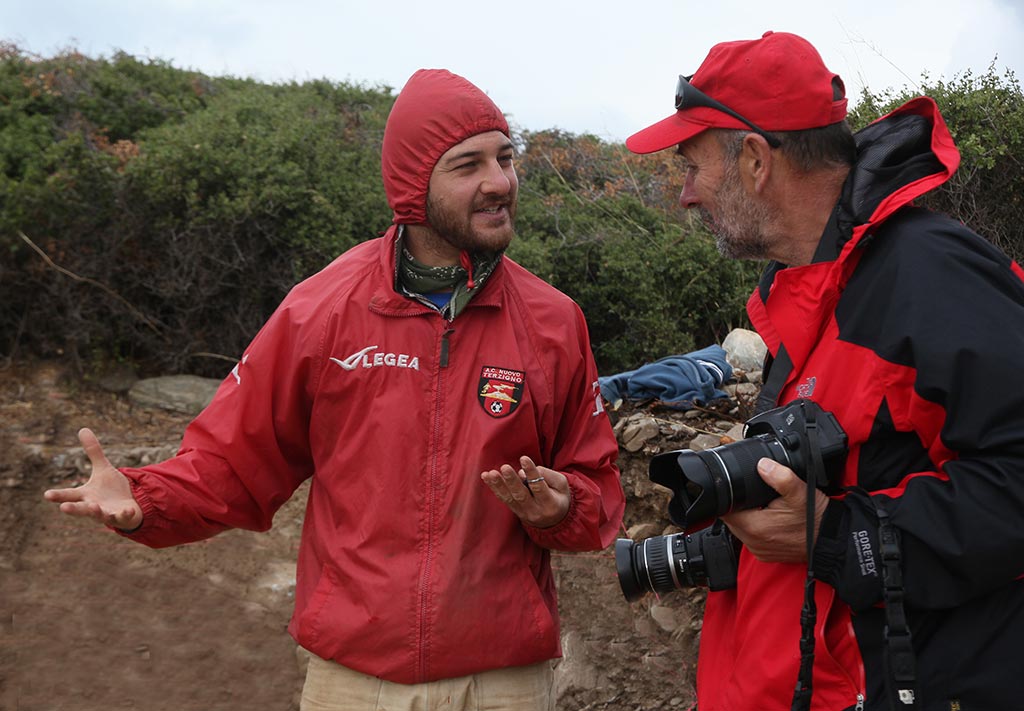
Bob is inspired by the amazing array of material that he has to visually interpret and represent. He says it is the “connection with material culture of past civilizations that is special…. that’s the part that gets under your skin and into your blood…. it’s hard to define – that connection with previous civilizations that we have.”
Bob keenly feels his duty to add to the work of the experts to help them study the material. His mantra is: “How do I photograph this piece that will provide the best possible information for the researcher, whatever sort of material it is? To clearly capture fine details such as inscriptions.”
It can be difficult to get some of the required straight-on, precise angles of artefacts. But Bob has built up techniques and modified equipment over the years so now he has a knack for how to do it.
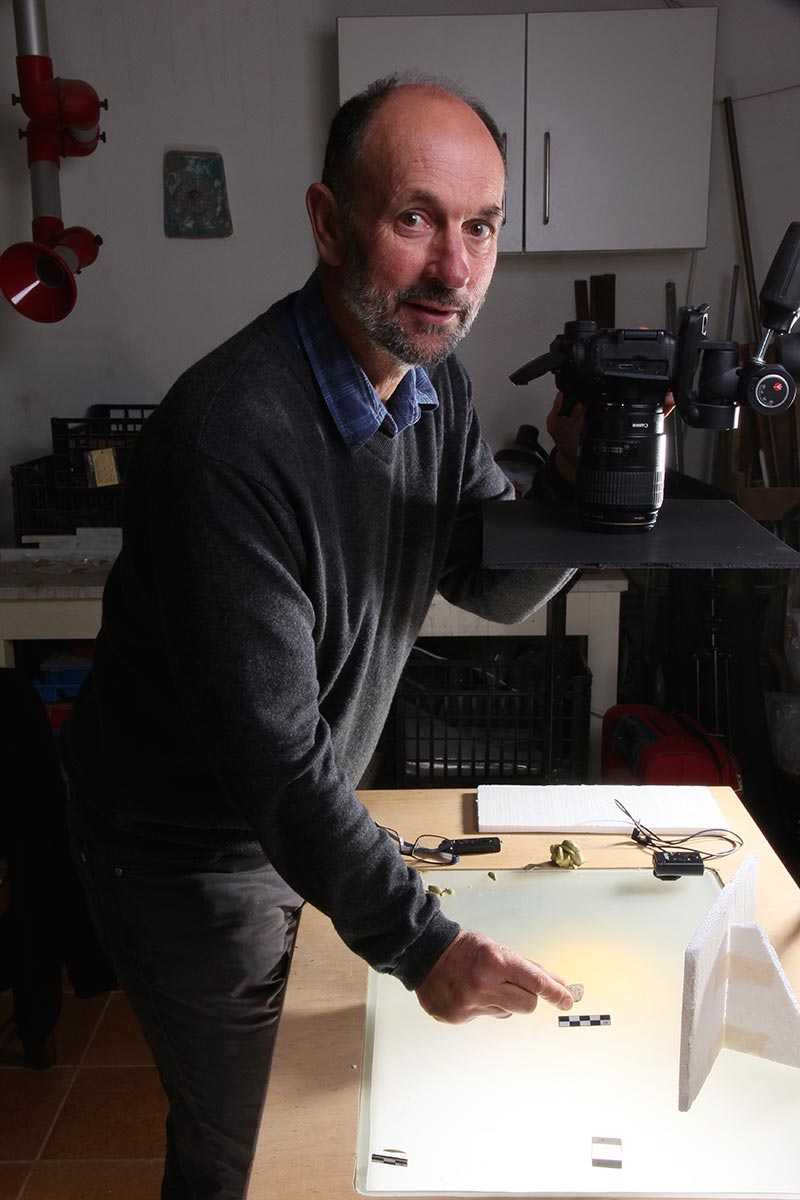
And how the archaeophotography continued….
Bob was asked to provide evidence of publications for a performance review while working as a lecturer at Canberra University in the mid 1990s. He telephoned the University of Sydney Archaeology Department to ask which of his work had been published from the 1990 Torone season.
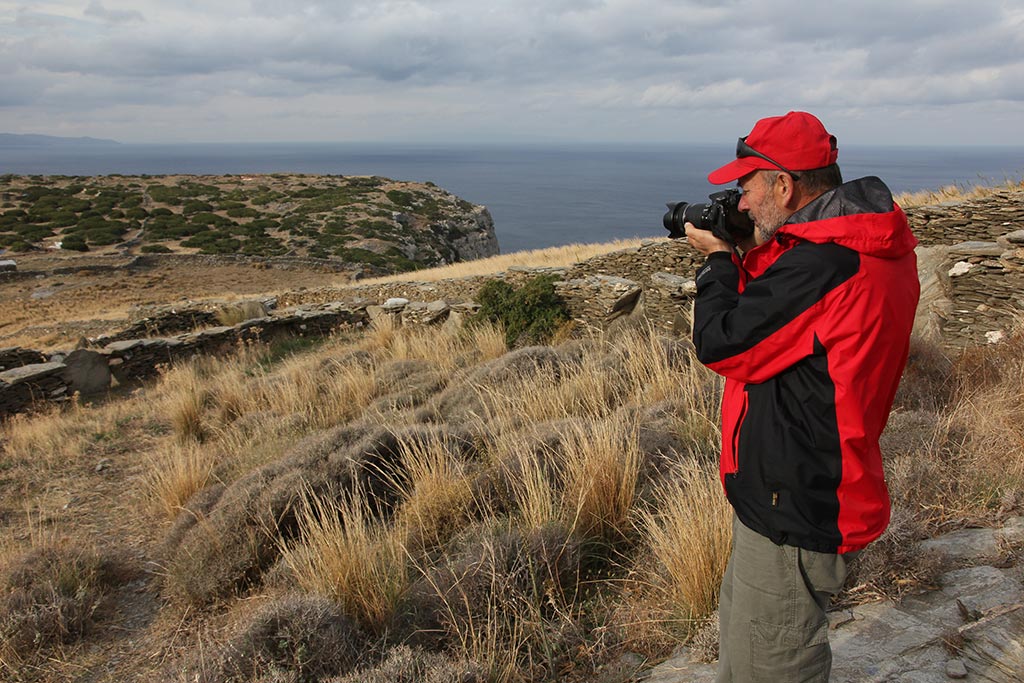
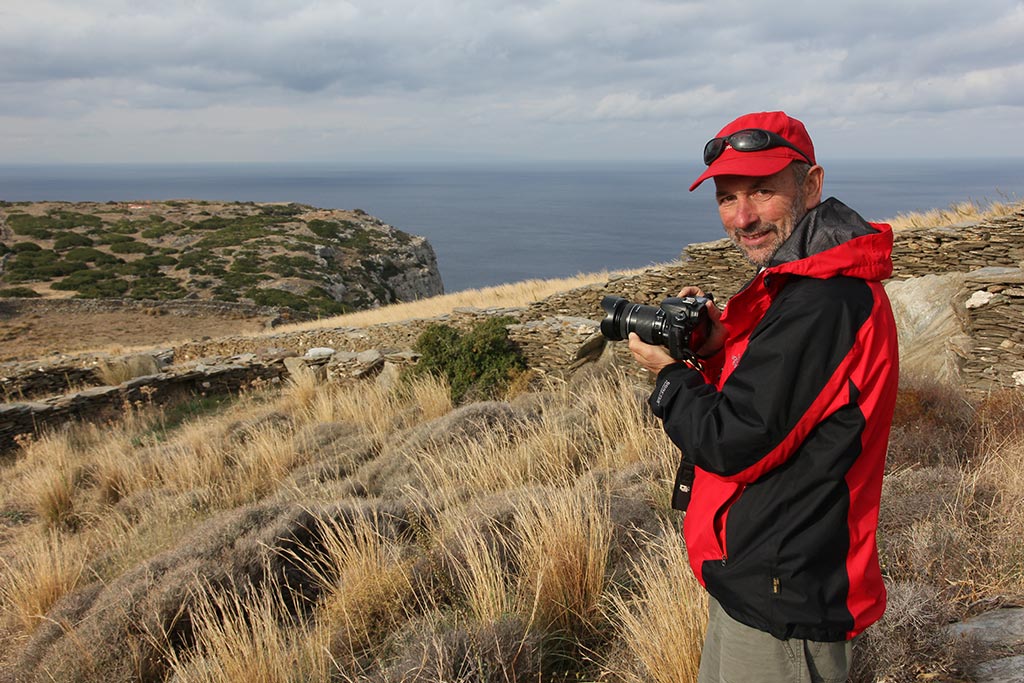
Professor Cambitoglou had left for Athens the previous day, and, in the serendipitous way of some of life’s opportunities, the person Bob spoke to on the phone happened to know that Professor Richard Green (who had been on the original Zagora team) had recently seen Bob’s 1990 Torone photographs and wanted to get in touch with him.
Professor Green, then Professor of Classical Archaeology at the University of Sydney and also director of the excavations of the Theatre of Paphos, Cyprus, wanted Bob to be photographer on the project. And so it was. Bob went to Paphos in 1997 during the university holidays, and has photographed most of the excavation seasons there since then.
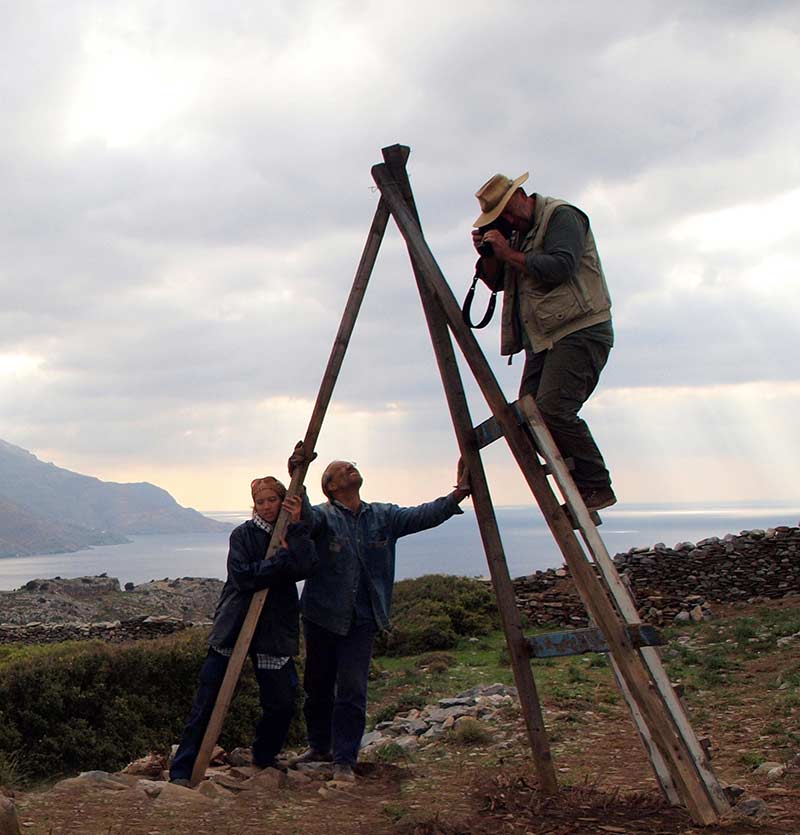
After 1997 in Paphos, Bob became increasingly sought after to work on Australian archaeological expeditions overseas. Around 2000, he worked at Jebel Khalid (known as JK in archaeological circles), Syria, under Professor Graham Clarke from the ANU, and in 2007 at Pella, Jordan, under Steven Bourke from the University of Sydney.
Bob has become friends with archaeologists from expedition directors to students over his 25 years photographing archaeology. He relishes these friendships, and the opportunity to live in different countries – not as a tourist, but living among the local people, such as the agricultural people in the Middle East – in Jordan, Syria and Turkey. And he loves his repeat visits to these places, enabling him to gain a deeper appreciation of their modern as well as their ancient cultures, and the places where they live and work.
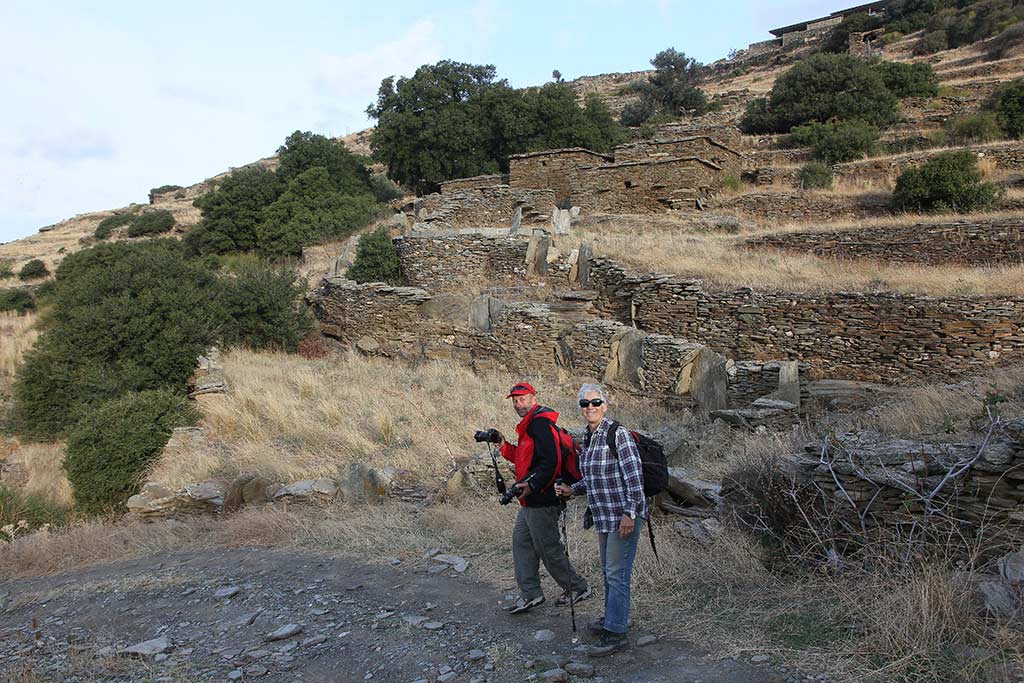
Digital pioneer
In the late 1980s Bob was fortunate to be on the front wave of digital technology right from outset. He was experimenting with it, and learned Photoshop 1 (not CS1 which was about Photoshop 10 or 11) only a year after it was first released. He taught digital photography and Photoshop from very early on – though he recognised that digital photography had a fair way to develop before it could approach the quality of film of that time.
In archaeology, photography was shot on film until early 2000s. In Bob’s opinion, 2003 was a watershed year when digital cameras became affordable and were capable of giving publication quality results for the first time. The early digital cameras had been very expensive and the quality of early digital images had lagged a long way behind film.
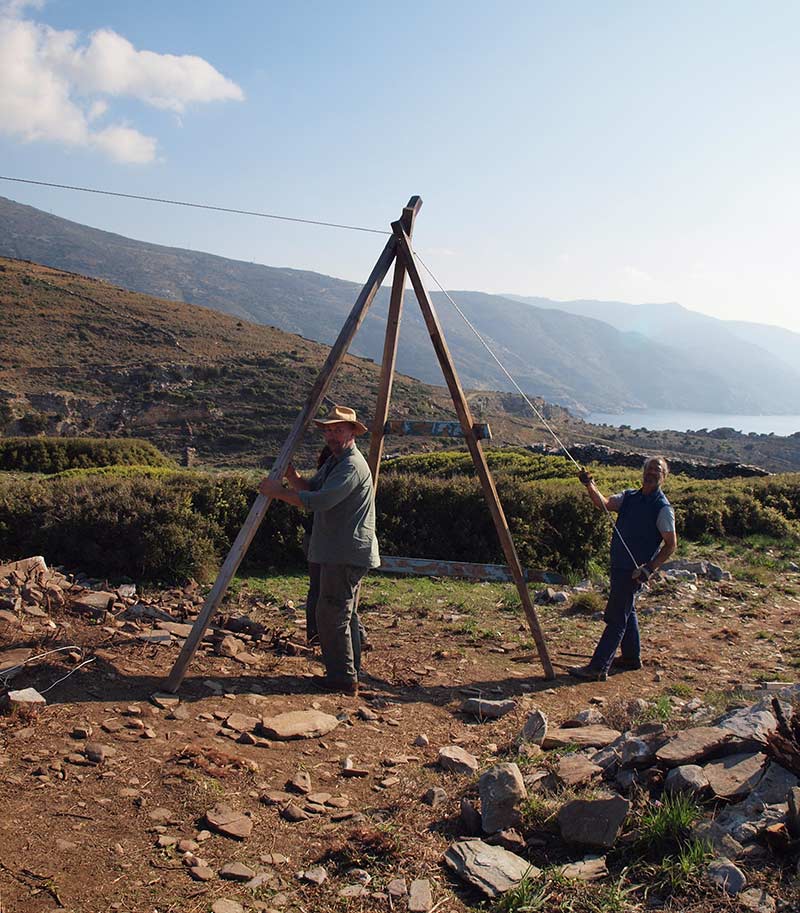
By 2003, Bob was converting all his personal photographic work to digital. And he began to persuade the archaeological projects he worked on that digital was the way to go.
Around 2005 he converted JK to digital, then Paphos, then Pella. Bob became known as the person who was converting archaeological photography from film to digital. In some cases it took a bit of convincing but as we all now know, archaeology and the rest of the world has now wholeheartedly embraced digital photography.
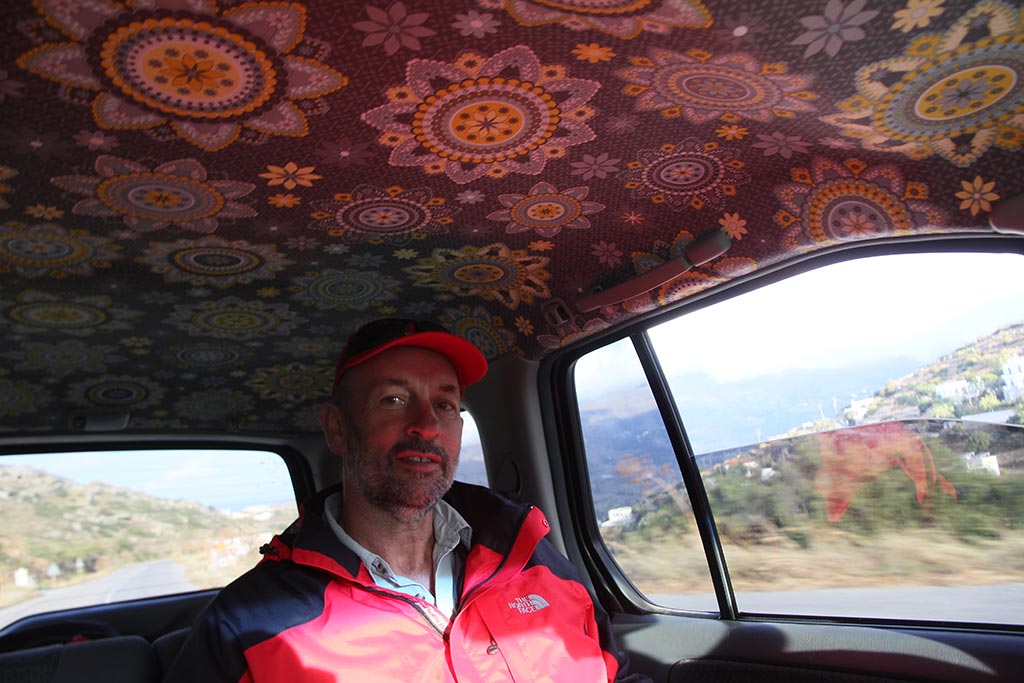
As a result of Bob’s pioneering development of digital archaeophotography, he was invited by Professor Nicholas Postgate to work on a Cambridge University project at Kilise Tepe, in Turkey.
He has also worked on other international excavations, including at Cyprus with Professor Edgar Peltenburg, Emeritus Professor of Archaeology from the University of Edinburgh, and the Warsaw University excavations at Nea Paphos led by Dr Henryk Meyza. On average Bob works on one or two archaeological excavations a year – and has done up to four. Perhaps surprisingly, Bob has never worked on an archaeological project in Australia.
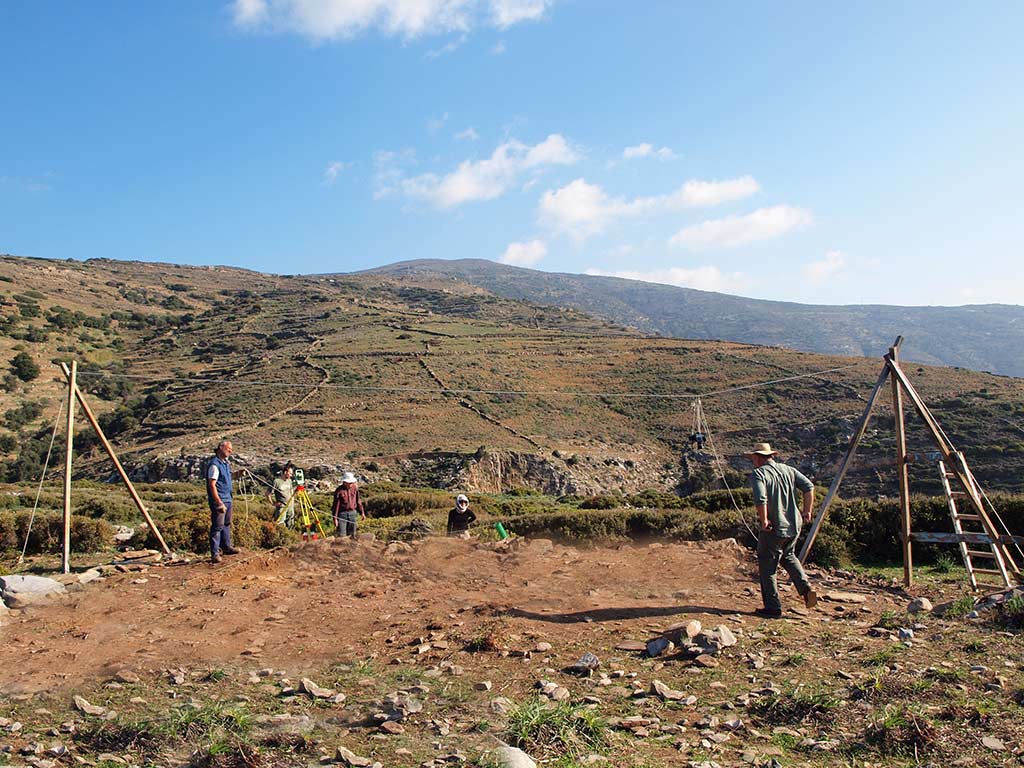
Continuing studies, continuing archaeophotography
Bob started his Ph. D in 2009. His exhibition, ‘Beyond the expected’ about which I opened this post, is a creative component of his Ph. D.
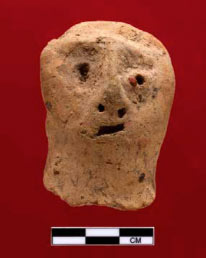
Through Bob’s clear vision, he helps us all to see more clearly – whether archaeologists, scholars or laypeople with an interest in history.
More of Bob Miller’s work can be seen at bobmiller.com.
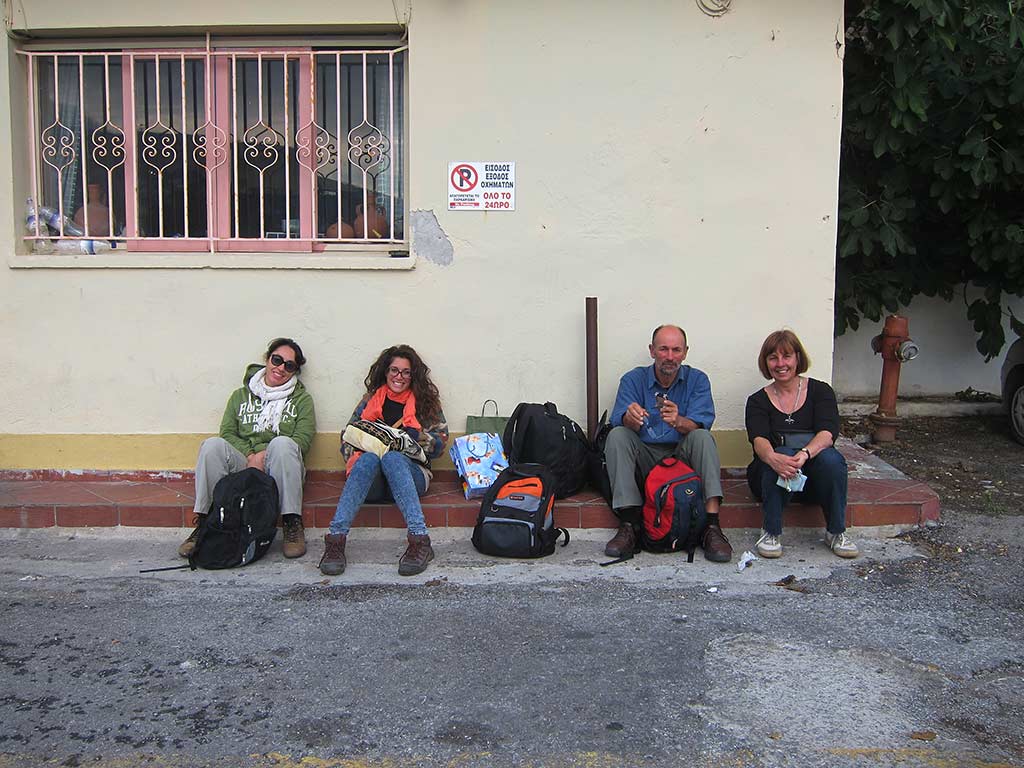
Many thanks to Bob Miller who generously shared his story and photographic expertise with me.
